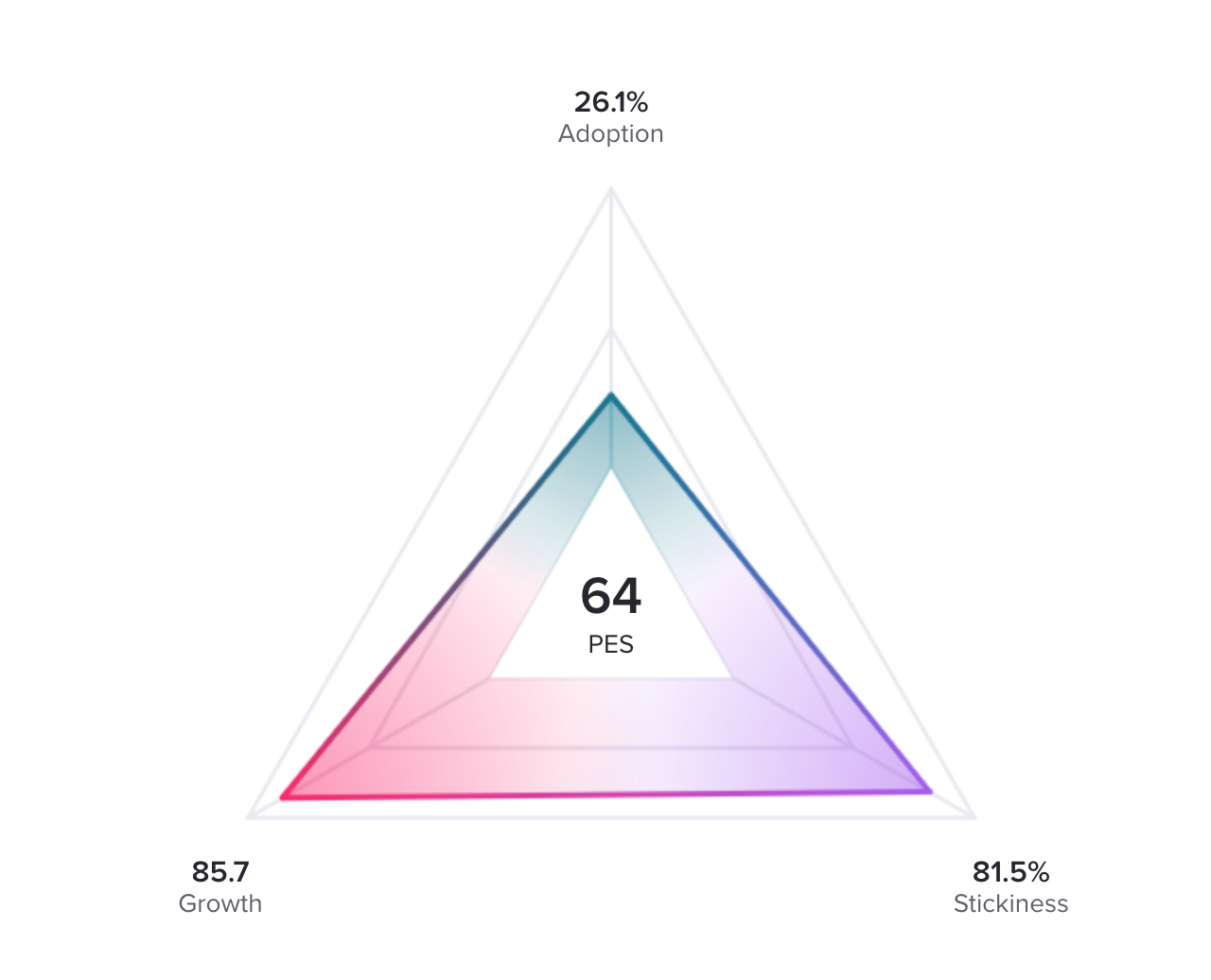Think about the last time you used a piece of software: was it easy to use? Did it help you complete a task faster? Did one specific feature draw you in? Do you plan to continue using it?
As users, we expect our favorite products (both in our personal and professional lives) to not only work seamlessly but to adapt as our needs change. Otherwise, we might look elsewhere. Knowing this, product managers can no longer ship a new feature and consider their jobs done. Success depends on adoption, retention, and ongoing engagement with the product.
Product engagement measures how users interact with an application at the most granular level and enables PMs to better understand what might be missing from the product experience. But, it’s about more than just measurement. Product engagement is about tracking usage in order to continuously make product improvements that will create a better experience for your customers and, ultimately, drive retention and growth.
Product engagement: why now?
It’s been almost a decade since Marc Andreessen unleashed on us the notion that software is eating the world. Today, that sentiment feels truer than ever. As people work remotely, children attend school from home, and in-person activities like doctor visits, corporate events, and dining are limited, we’re relying on digital products in nearly every facet of our lives. Sure, COVID brought this on, but many of these trends will remain with us post-pandemic.
To meet users’ needs, the product managers who build these products need to be dialed in to how their customers are engaging: which features are they using the most? How many people kept using the product after the initial onboarding flow? Are users accessing the app daily (and is this a good thing)?
Now, the stakes are too high to ignore product engagement. As our dependence on technology increases, users expect products to adapt to their needs and solve their problems before they even know they exist. If you’re not providing value and keeping customers engaged over time, low switching costs make it easy for them to abandon your product and find an alternative.
How to measure product engagement
Since there are so many different product metrics (and ways to calculate them) at a PM’s disposal, measuring product engagement hasn’t historically been as straightforward as, say, measuring sentiment with NPS. To help solve this, Pendo developed the product engagement score (PES) to give product managers a singular view into product engagement. The score is made up of three metrics:
-
- Adoption: The average number of Core Events adopted across all active Visitors or Accounts
- 粘着性:週間アクティブユーザーのうち毎日戻ってくるユーザーの割合(DAU/WAU)、または月間アクティブユーザーのうち毎日戻ってくるユーザーの割合(DAU/MAU)、または毎週戻ってくるユーザーの割合(WAU/MAU)の平均値
- 成長:新規および再訪したアカウントまたは訪問者の合計を、離脱したアカウントまたは訪問者で割った値(Quick Ratioとも呼ばれます)
To calculate your PES, take the average of adoption, stickiness, and growth, expressed mathematically as:
(定着率 + 粘着性 + 成長率)/3

While PES isn’t the only way to measure product engagement, it offers an easy way to quickly diagnose how a product is performing. Even better, the fact that it is a composite score allows you to dig into the why. If your PES is lower than usual, you can look at the three individual metrics to better understand what’s bringing down the average and needs more attention.
Combine this with things like customer feedback to hear exactly what users want from the product and in-app messages to guide them to the features (new and existing) that will be most valuable, and measuring product engagement becomes a continuous cycle of analyzing usage, iterating, and improving users’ experience with your product over time.
How to improve product engagement
Whether usage of your product has been rapidly changing or staying relatively steady, there’s always an opportunity to improve product engagement–especially now, when users’ expectations are at an all-time high. But, where do you start?
In our new interactive quiz, you’ll answer a series of questions about your product (e.g. are you tracking product KPIs? Is usage increasing or decreasing?) and get a curated toolkit of resources to help optimize product engagement. From dealing with a new persona in your user base to figuring out why usage levels are lower in the first place, improving product engagement will look different for every company. This quiz is designed to help you get started on the right foot.


